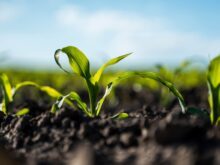Types of fertilizers
It is essential to distinguish and recognize the different types of fertilizers available on the market in the field of fertilization.
The choice between organic, mineral, and organo-mineral fertilizers can be influenced by various factors, such as environmental concerns, crop needs, and economic and structural availability. For this reason, it is essential to distinguish and recognize the different types of fertilizers available on the market in the field of fertilization.
Definition of fertilizer
The EC Regulation 1009/2019 – that entered into force in July 2022 – defines the term fertilizer as “a substance, […] or any other material, applied or intended to be applied on plants or their rhizosphere […] for the purpose of providing the plants or mushrooms with nutrient or improving their nutrition efficiency”.
The goal is to provide plants with the essential nutrients for optimal growth, favoring abundant and quality harvests that meet the needs of the agricultural market.
Fertilizers: typologies
Fertilizers can be classified into:
- Organic
- Mineral
- Organo-mineral
Let’s look at them in detail.
Organic and mineral fertilizers
Organic fertilizers are products derived from animal and plant materials. Considered the most sustainable, they reduce the risk of nutritional excesses as they are composed exclusively of natural matter.
On the other hand, mineral (or inorganic) fertilizers are products composed of nutrients obtained through extraction or physical and chemical processes. They can come in liquid or solid form.
From the DEMA range of products with various NPK formulations, Startphos (NP 11-51) is the microgranular mineral fertilizer with starter effect par excellence, as demonstrated by the product sheet.
Organo-mineral fertilizers
A third category of fertilizers is represented by organo-mineral fertilizers, obtained by mixing one or more organic parts with inorganic parts. These combine the benefits of organic and inorganic fertilizers, offering a gradual release of nutrients.
For example, Startphos Leo (NP 10-40), to which an organic part has been added (humic and fulvic acids). The product sheet demonstrates its characteristics and quality.
Other fertilizers
The “fertilizers” category is completed by other types, such as:
- soil conditioners
- amendments
These are materials added to the soil to improve its quality and structure.
In summary, choosing the right fertilizer depends on various factors. Understanding the characteristics of organic, inorganic, and organo-mineral fertilizers can help make informed decisions to achieve healthy and abundant yields.

